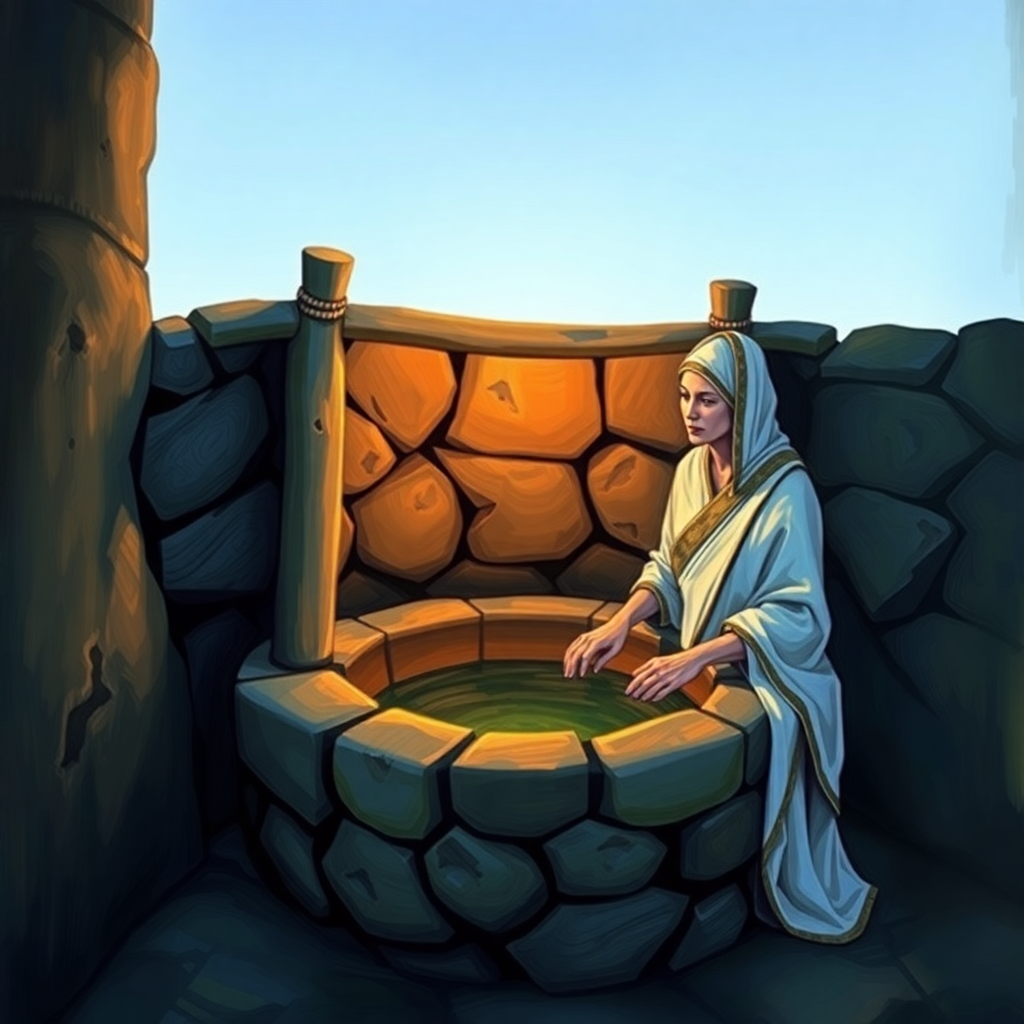The Woman at the Well: A Story of Grace, Transformation, and Unexpected Encounters
Her shame is replaced with excitement as she becomes the first evangelist in the Gospel of John, telling everyone, "Come, see a man who told me everything I ever did. Could this be the Messiah?"
The story of the Woman at the Well stands as one of the most compelling and transformative encounters in the New Testament. Found in John 4:1-42, this narrative breaks down social barriers and reveals profound truths about grace, acceptance, and spiritual thirst that resonate deeply with readers today.
The Setting: A Meeting That Shouldn't Have Happened
The encounter takes place at Jacob's Well in Samaria, around noon on what must have been a scorching Middle Eastern day. Jesus, traveling from Judea to Galilee, stops to rest while his disciples go into town to buy food. This seemingly ordinary moment sets the stage for an extraordinary conversation.
When a Samaritan woman approaches to draw water, the scene is loaded with social tension. Jews and Samaritans had centuries of bitter animosity between them. Moreover, a Jewish rabbi speaking to a woman in public was highly unusual for that time period. Yet Jesus breaks these cultural taboos with a simple request: "Will you give me a drink?"

The Conversation: From Physical to Spiritual Thirst
What begins as a practical exchange about water quickly transforms into something much deeper. Jesus speaks of "living water" that will quench spiritual thirst forever, leaving the woman initially confused but increasingly intrigued. This metaphor of living water represents the eternal satisfaction found in a relationship with God - something that contrasts sharply with the temporary relief of physical water.
The woman's response reveals her practical mindset: "Sir, give me this water so that I won't get thirsty and have to keep coming here to draw water." She's thinking in terms of convenience, not yet grasping the spiritual significance of Jesus's words.
The Revelation: Seeing Into the Heart
The conversation takes a pivotal turn when Jesus demonstrates supernatural knowledge of the woman's personal life. He reveals that she has had five husbands and is currently living with a man who is not her husband. This isn't meant to shame her but to show that he sees her completely - her pain, her searching, her broken relationships - and still offers her the gift of living water.
Rather than becoming defensive, the woman recognizes something profound is happening. "Sir, I can see that you are a prophet," she responds, then shifts to discussing worship and the coming Messiah.
The Identity Revealed: "I Am He"
In one of the most direct revelations of his identity in the Gospels, Jesus tells the woman, "I, the one speaking to you - I am he." This declaration that he is the long-awaited Messiah comes not to religious leaders or his closest disciples first, but to a marginalized Samaritan woman with a complicated past.
The Transformation: From Shame to Testimony
The woman's response is immediate and dramatic. She leaves her water jar - the very thing she came for - and rushes back to town. Her shame is replaced with excitement as she becomes the first evangelist in the Gospel of John, telling everyone, "Come, see a man who told me everything I ever did. Could this be the Messiah?"
Her testimony is remarkable in its honesty. She doesn't hide her past or pretend to be someone she's not. Instead, she points others to the one who knew her completely and accepted her anyway.
The Ripple Effect: A Town Transformed
The woman's authentic testimony leads many Samaritans to come and see Jesus for themselves. They invite him to stay, and he remains for two days. Many more believe, not just because of the woman's testimony, but because they encounter Jesus personally. They declare, "We know that this man really is the Savior of the world."
Timeless Lessons for Today
This ancient story continues to speak powerfully to contemporary readers. It reminds us that God's grace extends to everyone, regardless of their past, their social status, or their perceived worthiness. The woman at the well represents all of us in our spiritual thirst - seeking satisfaction in relationships, achievements, or possessions that ultimately leave us empty.
Jesus's approach models how we should engage with others: seeing beyond surface judgments, offering acceptance without condoning harmful behavior, and recognizing that everyone has inherent dignity and worth.
The story also demonstrates that our past doesn't disqualify us from being used by God. The woman's broken history became part of her powerful testimony, showing that authenticity often speaks louder than perfection.
The Living Water Today
For modern readers, the promise of living water remains as relevant as ever. In a world where people often feel spiritually parched despite material abundance, Jesus's offer of eternal satisfaction addresses our deepest longings. The living water he offers isn't just about eternal life in the future - it's about abundant life in the present, marked by purpose, peace, and genuine fulfillment.
The Woman at the Well reminds us that no encounter with Jesus is accidental, no person is beyond redemption, and no past is too broken to be used for good. Her story continues to inspire countless individuals to move from the shadows of shame into the light of grace, carrying the message that the Savior of the world offers living water to all who thirst.